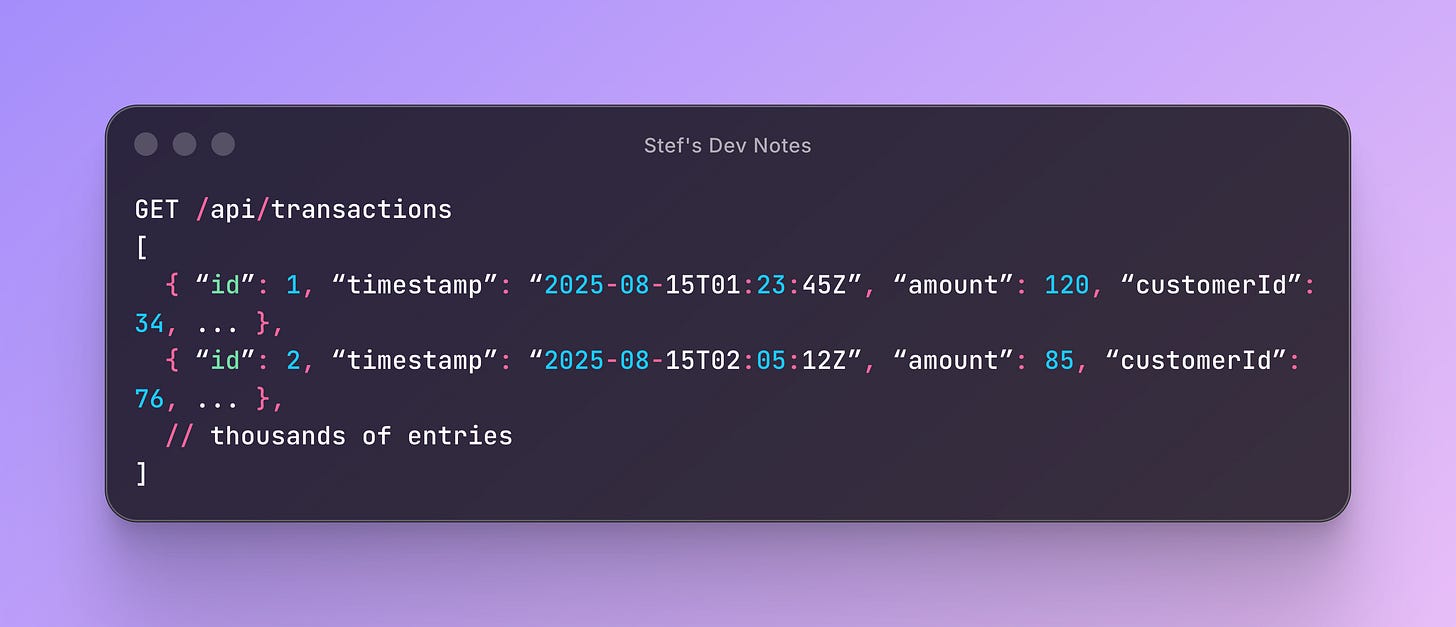The Future of API Design: Collaboration & Developer Experience
♻️ Knowledge seeks community 🫶 #15
👋 Welcome back to Stef’s Dev Notes !
This is Article #3 in The Future of API Design series.
In the first article, we laid out why data-dump APIs hurt teams and users. The second article dived into how to shape APIs around UI needs, exploring REST vs GraphQL and response design.
Now, let’s tackle the glue: how frontend and backend teams can collaborate to make those designs real and make APIs feel good to work with.
Why Collaboration is the Foundation of Good APIs
Even the most elegant endpoints can fail if teams aren’t aligned. When collaboration is missing, you get friction:
Mismatch: Backend builds for a schema, not the UI’s intent.
Extra Work: Frontend ends up filtering, aggregating, and reshaping data.
Slower Iteration: Small UI tweaks require backend changes.
Bugs: Diverging assumptions cause unexpected behavior.
When teams collaborate early, the payoff is momentum:
Shared understanding of product goals.
Contracts agreed upon before implementation.
APIs that feel intuitive, predictable, and easy to work with.
Collaboration isn’t just a soft skill, it’s a core part of developer experience.
A Scenario You Might Encounter
Imagine your team needs a dashboard: daily revenue trends, top products, conversion rates by channel.
Without alignment, the backend might return:
Frontend then has to:
Fetch thousands of items.
Group by day.
Aggregate revenue.
Filter and sort.
It works, but page loads slow, memory usage spikes, and business rule changes require updates in multiple places.
Now, imagine a contract-first workshop:
Product, frontend, and backend sketch the dashboard together. They define a summary endpoint:
Both teams know exactly what to expect. Frontend can build with mocks, backend can optimize aggregation, and the result is faster, clearer, and more predictable.
Collaboration Techniques & Best Practices
1. Workshop UI + API Design Sessions
Sketch together. Start with user flows and mockups, annotate data needs per screen, and discuss edge cases upfront.
2. Contract-First Development
Define before building. Use OpenAPI/Swagger for REST or SDL for GraphQL. Agree on contracts before any code is written.
3. Use Shared Tools & Mocks
Enable parallel work: use Mock Service Worker (MSW), Swagger UI, or GraphQL Playground so frontend and backend can develop simultaneously.
4. Consistency & Vocabulary
Agree on conventions for IDs, pagination, filtering, and errors. A userId should mean the same thing everywhere.
Balancing Developer Experience & Technical Trade-Offs
Great DX doesn’t ignore performance or debt. Expanded nested objects may simplify frontend logic but hurt backend efficiency. The goal: agree in advance on where flexibility helps and where constraints are non-negotiable.
The Payoff: APIs That Feel Like Tools
When collaboration and DX align, here’s what you’ll see:
APIs that feel intuitive, not surprising
Less frontend boilerplate → UI devs writing rendering logic, not data wrangling
Faster iteration → small UI features shouldn’t require major backend changes
Better onboarding → new engineers learn the API faster because it’s consistent
Less friction → fewer debates over who owns what logic
APIs become tools that help your team move faster, not obstacles.
Links & What’s Next
As in Article #1, we saw why raw data APIs hold teams back. In Article #2, we focused on designing APIs with intent and shape. Now, in Article #3, we’re looking at how we build them together.
Up next: Article #4 - Migration Strategies: Escaping Data-Dump APIs, where we’ll talk about how to transition from legacy systems to better-designed APIs without breaking everything.
Something to think about ..
What’s one collaboration practice your team adopted that improved API alignment? Or one mismatch you’ve run into?
Share your story in the comments.
Until next time,
Stefania
Articles from the ♻️ Knowledge seeks community 🫶 collection: https://stefsdevnotes.substack.com/t/knowledgeseekscommunity
Articles from the ✨ Frontend Shorts collection:
https://stefsdevnotes.substack.com/t/frontendshorts
👋 Get in touch
Feel free to reach out to me, here, on Substack or on LinkedIn.




